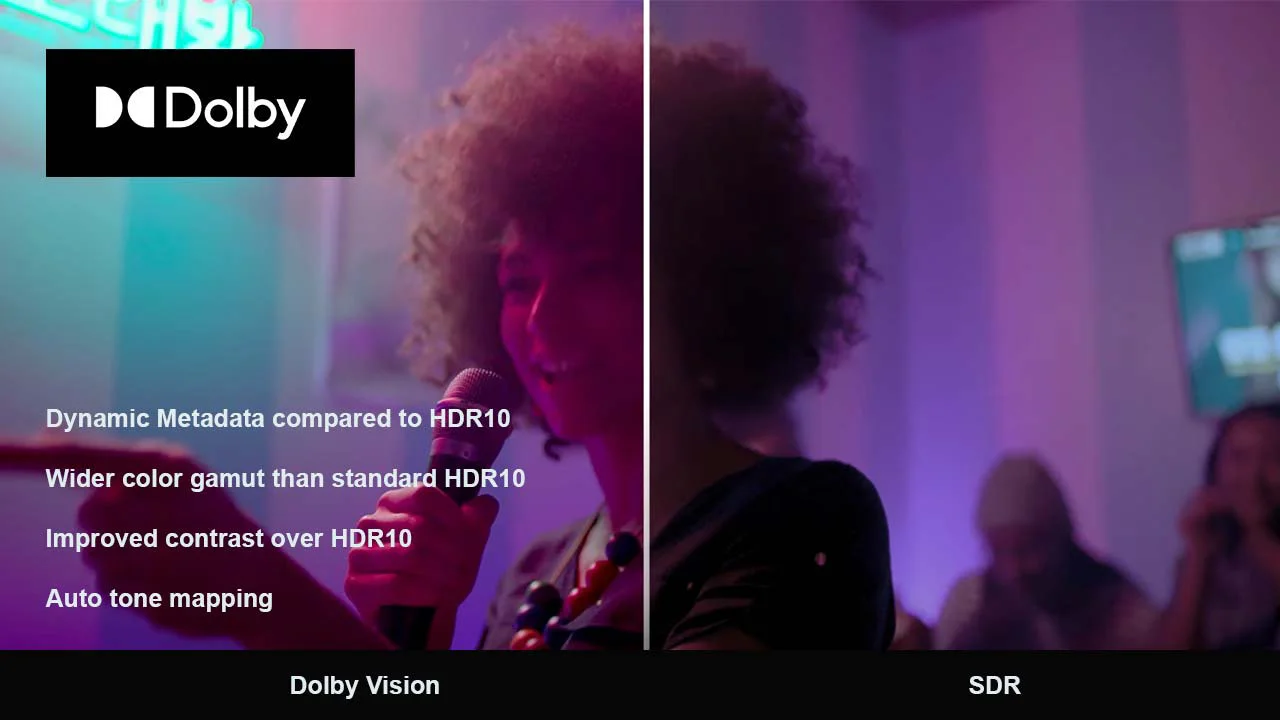Dolby Vision is a proprietary HDR (High Dynamic Range) technology developed by Dolby Laboratories. It is a standard for HDR video on televisions, projectors, and streaming devices. Dolby Vision uses a 12-bit color depth and can display a wider color gamut than traditional 8-bit displays.
Dolby Vision offers several advantages over other HDR standards, such as HDR10. Some of the benefits of Dolby Vision include the following:
- Dynamic metadata: Dolby Vision uses dynamic metadata, which allows the display to adjust the brightness and color levels of each video frame on the fly. This results in a more precise and accurate reproduction of HDR content.
- Wider color gamut: Dolby Vision can display a wider range of colors than traditional displays and other HDR standards, resulting in more vivid and lifelike images.
- Improved contrast: Dolby Vision offers a higher contrast ratio than conventional displays, making images appear more detailed and realistic.
While the onscreen brightness of a flat panel is consistent regardless of the room environment, a projector’s on-screen brightness can vary greatly based on the screen being utilized. The first consumer projectors that supported Dolby Vision were Laser TVs.
Since Laser TVs are bundled with a screen, the projection system's maximum brightness capabilities can be calculated. The projector can use this info and the dynamic metadata found in Dolby Vision content to properly tone map the HDR content to look best in your environment. This ensures users see more detail in Dolby Vision-encoded HDR content.
You are now starting to see standard throw projector that support Dolby Vision. Since Dolby Vision needs to know how much on-screen brightness is available, standard throw projectors include a menu setting where you can select the size and gain of your screen. Once you input the screen information, the projector can use this info and the dynamic metadata found in Dolby Vision content to properly tone map the HDR content to look best in your environment.
Since we had a couple of movies in both Dolby Vision and HDR10, I took the time to compare the differences. There was a noticeable improvement in highlight detail and black level when viewing the Dolby Vision version. The HDR10 looked fine, but the Dolby Vision version just looked better.
Automatic tone mapping: Dolby Vision automatically maps the HDR content to the display's capabilities, which ensures that the content is displayed correctly regardless of the display's capabilities.
Some consider Dolby Vision the most advanced HDR standard; some major streaming services support it and are backed by high-end TVs and projectors. It's regarded as the highest-quality HDR experience that is currently available.


